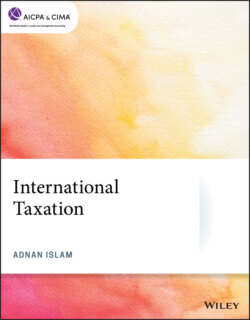Читать книгу International Taxation - Adnan Islam - Страница 32
Operating through a foreign branch — summary
ОглавлениеAfter exporting goods from the United States, the next step for a U.S. business is conducting direct business operations overseas, either through foreign branch operations or through foreign subsidiary corporation(s). A foreign business operation may manufacture goods, provide services, or perform special functions (for example, advertising, financing, and sales). Frequently, a foreign business operation requires a significant number of full-time personnel, including people who are transferred from the United States to the foreign country.
U.S. taxpayers typically use the following approaches to establish a foreign branch.
1 Send personnel or employees or have an office in a foreign jurisdiction sufficient to be considered a branch but with no legal entity within the foreign jurisdiction (a true branch).
2 Establish a legal entity that is legally considered a branch within the foreign jurisdiction or country.
3 Form a legal entity/corporation within the foreign jurisdiction and make an entity classification election or check-the-box election to treat the entity as a foreign disregarded entity (FDE) for U.S. federal income tax purposes (a checked branch or an FDE).
